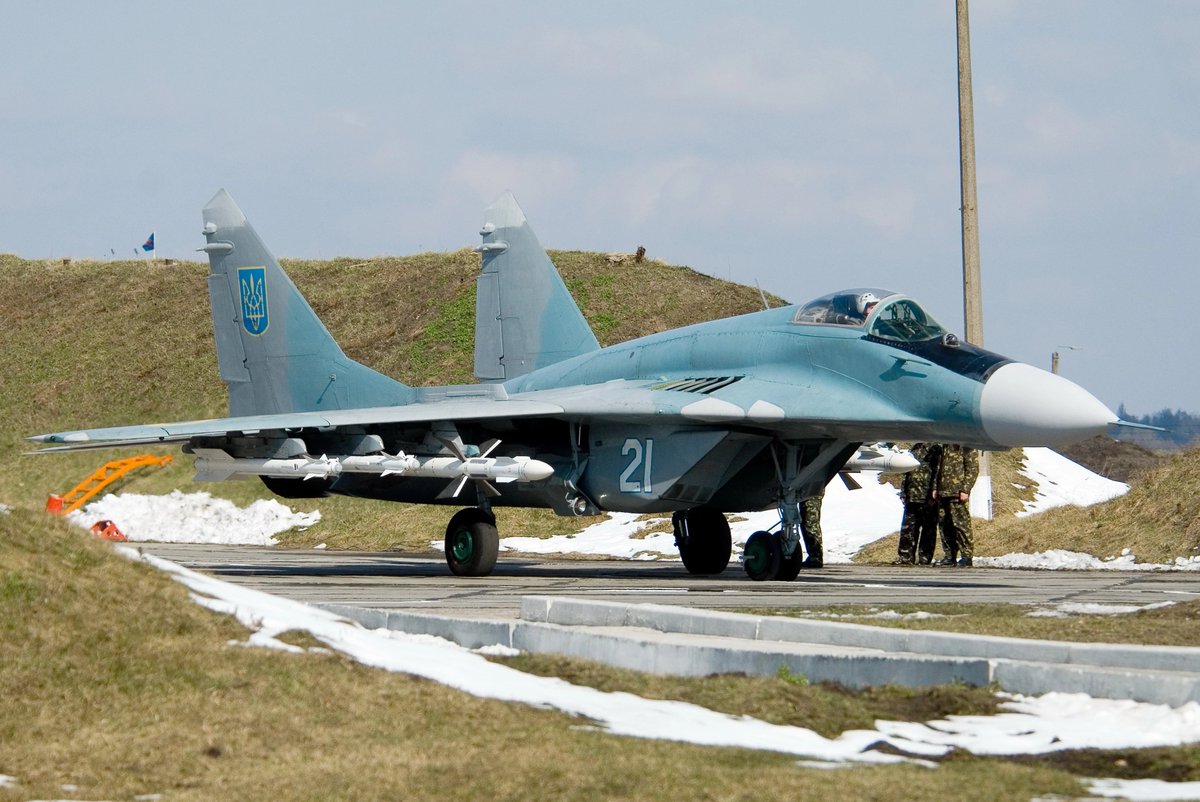
Given interest in the Iranian Shahed-136 (and smaller Shahed-131) loitering munitions now being used at a rapidly increasing scale by Russia in Ukraine, and some of the breathless claims being made about them; a brief thread on what they can and can't do compared to jets (1/20) 

Far from being cutting edge, loitering munitions have been around since the late 1980s; the Israeli Harpy being the most successful. They are essentially slow, propeller-powered missiles. Early variants had anti-radiation seekers to home in on enemy SAM radars. (2/20) 

They were developed to combine the capabilities of target decoys with those of anti-radiation missiles. Due to fuel efficient, slow flight, they could travel hundreds of kilometres and loiter for several hours. If enemy SAM radars illuminated to engage, they would be hit. (3/20) 

The basic technology required is extremely basic compared to traditional combat aircraft. A small piston engine designed for light or model aircraft, a simple flying wing body from plastic, metal or composites, basic navigation capabilities and a seeker or some kind. (4/20) 

The big change in the last decade has been the ballooning availability of cheap consumer micro-electronics with ample processing power and GPS-based navigation (e.g. smartphone components). This has given even non-state groups access to reasonable accuracy vs fixed targets (5/20) 

Iran has enthusiastically embraced the technology, and has supplied training and critical components to its Houthi allies in Yemen. The resultant loitering munitions have proven able to hit oil infrastructure and military bases throughout Saudi Arabia for many years now. (6/20) 

Iran also regularly launches loitering munitions from Syria towards Israel, including more sophisticated designs with some stealth features. They are almost all intercepted and shot down, like this one by IAF F-35s, as Israel has a dense, multi-layered air defence network. (7/20) 

Today loitering munitions like the Shahed-136 offer a relatively cheap way for states and some non-state groups to mount long range attacks on fixed targets (using GPS/INS navigation) or radars (using an anti-radiation seeker). However, there are significant limitations (8/20) 

Firstly they rely on commercial GPS for navigation and terminal accuracy. If GPS is jammed then both will degrade rapidly. Secondly the warhead capacity is small (typically 5-30kg) which limits damage and viable target sets compared to regular bombs, missiles or artillery. (9/20) 

Third, the components are typically commercial, with little or no protection against anti-UAV systems that use high-powered microwave or other electronic effects. Fourth, simple ones cannot easily be used to strike moving targets, which limits flexibility on a battlefield (10/20) 

Fifth, they are slow- and low-flying, which significantly limits their utility as responsive weapons against a sudden threat at range and also makes them comparatively easy to intercept with old-fashioned radar-laid anti-aircraft guns like the German Gepard SPAAG. (11/20) 

Many of these limitations can be mitigated. Multi-mode seekers can be added. Advanced warheads can open up more target sets within weight limits, small turbojets can increase speed. Military grade electronics can improve EW resistance. But all are expensive and complex (12/20) 

For example, Morocco reportedly paid $22 Million in 2021 for 15 of the advanced Israeli Harops. While highly capable, these are not 'swarming' because few could buy them in large enough numbers. At this cost they are competing with traditional missiles for many missions. (13/20) 

Russia's Shahed-136s are certainly an increasing problem for Ukraine. Air defences cannot intercept them all, and they will cause damage to cities, bases and probably SAM radars. Western partners should increase deliveries of short- and medium-range air defences to help. (14/20) 

The damage caused will be tragic and militarily inconvenient. However, Ukraine is united and winning despite whole cities ruined, and heavy barrages of cruise and ballistic missiles. Shahed-136s, even if hundreds get through, are highly unlikely to change the outcome. (15/20) 

Almost all militaries (except Israel) have been far too slow to take the threat of loitering munitions (and especially small UAS) seriously. But, against simple, cheap types that can swarm there are many routes to countering them, from SHORAD, to EW systems and MANPADS. (16/20) 



Physics still applies, and anything small and cheap enough to expend in great numbers can either go fast or far but not both, and payload will be small. If you add multi-mode seekers, advanced navigation, stealth and EW resistance, costs will be like other modern missiles (17/20) 

By contrast, fast jets are expensive and complex to maintain, but offer much heavier, more flexible firepower; far more potent sensor suites; reusability; signalling options; visible deterrence; and survivability. They are so more than precision strike delivery platforms. (18/20) 

If one still needs convincing that (while extremely useful, and here to stay) they are not a replacement for fast jets, look at the first user and most prolific developer (and target) of loitering munitions. Israel 'gets it', yet is pouring money into both F-35 and F-15. (19/20) 

One final plea (in vain). Please stop calling them 'suicide' or 'kamikaze' drones. Shahed, Harop, Qasef, Switchblade etc are munitions. That they are propeller-driven and can loiter in flight doesn't mean a term we wouldn't apply to any other missile is appropriate... (20/20) 

• • •
Missing some Tweet in this thread? You can try to
force a refresh













